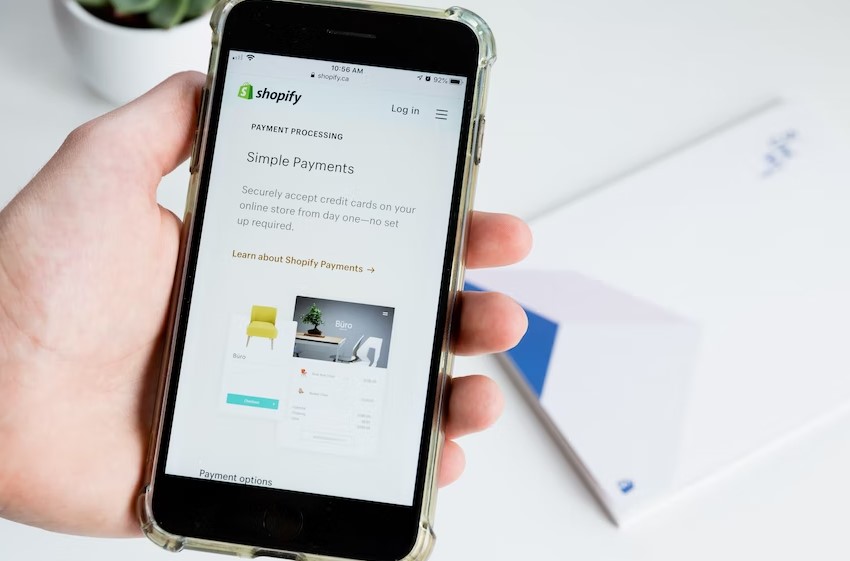
The integration of Shopify with an ERP (Enterprise Resource Planning) is done to synchronize and automate the business processes of a company that sells products through the Shopify platform. An ERP is a business management software that allows companies to plan and manage resources efficiently and effectively.
This integration allows the company to have a more complete and real-time vision of its business, which facilitates decision-making. By integrating both platforms, inventory, sales, order, and shipping data can be automatically synchronized, preventing errors and data duplication.
Additionally, integrating an ERP with Shopify can help improve efficiency in order processing and inventory management, which can save time and reduce operating costs.

How Shopify's integration with an ERP works
Event notifications
Shopify has the ability to send event notifications. In other words, things that happen on the web page, on the e-commerce site, can be quickly transferred via API to the ERP, in real time, which greatly optimizes operations.
Send notifications of orders generated, delivery status changes, orders canceled by a customer. Notifications of events that occur on the website. Purchases that are automatically generated by Shopify can be delivered through certain services that they provide.
It is necessary to have an external service layer
When you are going to integrate an ERP, you must also consider that you must have an external service layer, such as an application, that will communicate your ERP with the e-commerce store.
Normally, when you are going to integrate an ERP with Shopify, it is like a bridge: Shopify is going to put half and the other half is going to be put by the ERP. You have to have the ability to have that half of the ERP, which is basically a service layer that is going to allow you to create, update, delete or edit things within the ERP, which can be managed with permission levels.
For example, someone may have permissions to handle orders but may not have rights to handle payments. This is possible through the service layer, which at the ERP level you can control the writings that can be done within the ERP.

Homologation of information between Shopify and an ERP
It's a bit different how Shopify is managed in an ecommerce store than it is managed within an ERP.
When a customer enters an e-commerce site, she can be buying anywhere, in any store, because she is simply buying on a page but does not know where the product is physically located.
In ERPs, they normally have administration modules, which is not the same as, for example, going to buy in a store, physically. The process of how you buy on an e-commerce site is a little different than how you manage it within an ERP.
There has to be a kind of homologation of the information, that is to say, that the information that comes out of one place, the other gets to interpret it the way it came out. For example, an order has different conditions, it has a delivery status, order status, it has a payment, payment status, for all those things, the ERP must have the ability to understand it.
All the approval is done in the intermediate layer, where half of the APIs are set by Shopify and the other half are set by the ERP and that communication between both systems is generated there.

It is important to have a service layer with the ERP (...) Shopify already has all the administration, as an electronic store, to generate orders, generate payments, deliveries, but the ERP must also have that layer to be able to understand all that I'm going to send you.
Shopify's flexibility to add functionality
At the level of eCommerce store capabilities, Shopify has a lot of flexibility, in the sense that you can quickly add functionality, scale the application. For example, you can add a plugin that generates a discount coupon for the person when they enter the e-commerce for the first time. This and many more things can be added within Shopify, since it has many plugins that improve the experience and boost sales.
Shopify improves the entire experience at the customer level. For example, every time an order update is generated, the customer receives an email notification with the status of the purchase. All of that is handled by Shopify, which greatly improves the user experience and increases engagement.
Unification of customer data from ERP and e-commerce
This integration between Shopify and an ERP will allow to gather all the information of the customers who buy in a physical store and those who buy online. In this way, consumer purchasing patterns and customer purchases can be detected, those who prefer to buy online and those who prefer the physical store. This makes it possible to improve the relationship with the client, personalizing the experience.

Information synchronization
Another thing that is important when you are going to integrate your ERP with Shopify, and that also enters into the data homologation part, is the synchronization of the information. Many of the difficulties that e-commerce sites or companies go through when they approach this issue of creating an e-commerce store, is that the information if it is not synchronized can lead to a bad customer experience.
For example, when the user enters the e-commerce, sees a product, buys it and confirms the order, only to be later told that there is no product in stock, when they had previously been told that it was.
That happens when the information is not synchronized, the ERP has one availability and the e-commerce store has another. And since the e-commerce store is not aware of the amount of product available in the ERP, what you are actually doing is generating a bad customer experience.
The idea is that when the orders are generated within the ERP, the e-commerce site finds out. That is, you can sell on an e-commerce site products that you have physically in a store. But you have 5 products, a customer arrived to whom you sold 5 products and then an online customer buys 1 additional. That's when the online customer is told: there is no stock, I sold the products.

This can happen in a matter of minutes, that the products are sold in the physical store and there is no availability for those who buy on the electronic site a few minutes later. This is because the information is out of sync.
Shopify scalability
That's the great thing about Shopify too, the scalability. Even with a basic plan, you have the ability to create your integration with an ERP. But for large businesses, Shopify Plus is also recommended, also at the experience level, there are needs. For example, having the function of generating invoices available.
In conclusion, the integration of Shopify with an ERP is an effective solution to optimize the management of an online store and improve business efficiency. By automatically synchronizing inventory, sales and order data between both platforms, errors and duplication of information can be avoided, which reduces operating costs and allows a more complete and real-time vision of the business.
Do you need an expert team in Shopify and ERP? At Rootstack, we have +10 years of experience supporting companies in their digital transformation. Contact us!
We recommend you on video

